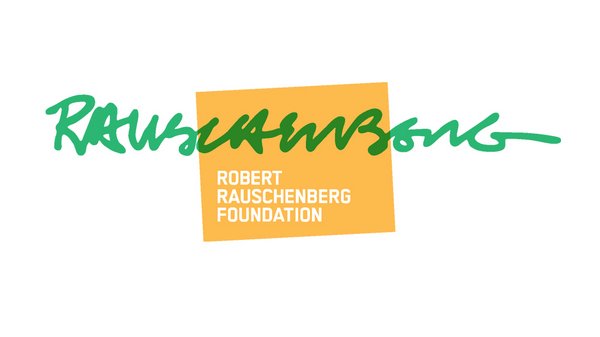-
Topics
backTopicsOur programs create spaces where open-minded leaders can gather for breakthrough conversations on pressing global issues – each aligned to one of the following pillars:
-
Events
backEventsExplore the variety of events Salzburg Global hosts within Austria and in the rest of the world. Learn more about our programs and what else happens at Schloss Leopoldskron.Upcoming EventsDec 01 - Dec 06, 2025Peace & JusticeAdvancing Youth Safety and Justice: Transformative Policies, Community Solutions, and Accountable PracticesGlobal Innovations on Youth Violence, Safety and JusticeDec 08 - Dec 13, 2025EducationSkills for Tomorrow: Building the Next Generation of Vocational LearningEducation for Tomorrow's World
- Insights
-
Fellowship
backFellowshipSince 1947, more than 40,000 people from over 170 countries have participated in Salzburg Global's sessions. Collectively, these alumni are known as Salzburg Global Fellows.
-
About Us
backAbout UsSalzburg Global is an independent, non-profit organization committed to creating spaces that overcome barriers and open up a world of better possibilities.Our Approach
-
Support Us
backSupport UsYour generosity helps us gather open-minded leaders for breakthrough conversations, while creating space for dialogue that overcomes barriers and opens up a world of better possibilities.
- Donate
Applications for this session are no longer open. Join a session
Culture
Beyond Green: The Arts as a Catalyst for Sustainability
The creative sector has played a significant role in efforts to raise awareness of the impacts of climate change and encourage sustainable social, economic, and environmental practices worldwide. Many artists and cultural organizations have embarked on remarkable projects that make us reflect on our behaviors, our carbon footprints, and the claims of infinite growth based on finite resources. Sometimes treading a fine line between arts and advocacy, they have sparked extraordinary collaborations that reveal new ways of living together on a shared planet.
The 'art of the possible' will become even more relevant as 2016 dawns - bringing the challenge of how to implement the Sustainable Development Goals and the Climate Change Agreement adopted at the end of 2015. Yet with negotiations overshadowed by scientific controversy, political polemic and geographic polarization, individuals can easily lose faith in their own ability to shape change beyond the hyperlocal level. Against this challenging backdrop, could the arts and creative practice become a particle accelerator - to shift mindsets, embrace new ways of sharing space and resources, and catalyze more creative leadership in the public and private spheres?
The goal of this Salzburg Global Seminar session was to build on path-breaking cultural initiatives to advance international and cross-sectoral links between existing arts and sustainability activities around the world, encourage bolder awareness-raising efforts, and recommend strategic approaches for making innovative grassroots to scale for greater, longer-term impact.
Date
Feb 19 - Feb 24, 2016
Session no.
Session 561
Share
Session Documents
Session Format
The highly interactive program combined theory, policy and practice across sectorial silos, opening up new perspectives and intensive learning opportunities. Participants grappled with key questions around best practices in promoting sustainability through the arts during short plenary sessions featuring expert presentations, demonstrations and debate. They worked flexibly in small groups to deepen practical discussions and problem-solving, developing new tools and approaches for future work and collaboration in the areas of urban design and planning, cultural policy development, education, creative industries, research, advocacy, public engagement, and shifts in consumer behavior.
Key Themes and Questions
Some of the main themes and critical questions that were the focus of the plenary presentations and discussions included the following:
Artists Catalyzing Change
What remarkable arts-based projects around sustainability have startled and moved people and broken through barriers to inspire lasting change? What can be learned from these groundbreaking stories and ideas, and is it possible to transfer these insights to other contexts, replicate them and/or take them to scale? Can we identify best practices and pre-conditions for success?
Designs on Beauty
What are stunning examples of “sustainable design” from around the world –at the consumer product level and from the realms of fashion, architecture and urban design? How can cutting-edge sustainable design become more accessible, affordable, and widely replicated? How can environmental and social sustainability be better incorporated into educational models and professional training and degree programs going forward?
Tipping Points: Raising Awareness, Engaging the Public, and Changing Behavior
Environmental messaging often comes across as ‘doom ‘n gloom’ to communicate urgency, which can be counterproductive to the extraordinary range of citizen- and community-led initiatives seeking to drive change. Cultural innovators, whose work is rooted in collaboration, have deep understanding of opportunities in place and space and can broker alternative forms of messaging, diplomacy and conflict transformation. How can we harness the power of the arts to interpret complexity and communicate the deep importance of natural systems in order to play an even more important role in promoting awareness, particularly through education?
People and Planet: Connecting Stewardship, Justice and Prosperity
Much is written about “people, profit, and planet” or the “triple bottom line,” but despite major efforts, unsustainable patterns of production and consumption still dominate the global economy and rising inequality dominates the headlines. With creative industries growing fast in value and prominence, could this sector become a multiplier to shift consumer behaviors, accelerate equitable labor practices and responsible sourcing and enhance a sense of global citizenship? Does their power to capture our imagination carry a unique responsibility as well as economic opportunity?
Sustainability and the City
Given the dramatic urbanization trends we are already witnessing in the 21st Century, cities and their leaders and citizens will need to become even more important drivers of sustainability in the future. What cities have already embraced the efforts of artists and the creative sector to catalyze this process? How can more cities, mayors, municipalities and citizens be encouraged to follow suit? What evidence is available regarding the impact of empathetic social design upon community cohesion, health and wellbeing? What examples of best practice particularly with respect to urban planning and public space have emerged and how can they be replicated or adapted elsewhere?
Forging New Alliances and Partnerships for Exponential Change
Many arts councils and cultural organizations and ministries have made great progress in incorporating sustainability into their own policies, practices, and investments. At the same time, they have lobbied with some success to include culture in the Sustainable Development Goals.and in climate change agreements Looking forward, how can artists, arts councils, and cultural institutions around the world take these internal and external successes to the next level? How can we encourage new creative alliances and unusual partnerships for exponential change?
Artists Catalyzing Change
What remarkable arts-based projects around sustainability have startled and moved people and broken through barriers to inspire lasting change? What can be learned from these groundbreaking stories and ideas, and is it possible to transfer these insights to other contexts, replicate them and/or take them to scale? Can we identify best practices and pre-conditions for success?
Designs on Beauty
What are stunning examples of “sustainable design” from around the world –at the consumer product level and from the realms of fashion, architecture and urban design? How can cutting-edge sustainable design become more accessible, affordable, and widely replicated? How can environmental and social sustainability be better incorporated into educational models and professional training and degree programs going forward?
Tipping Points: Raising Awareness, Engaging the Public, and Changing Behavior
Environmental messaging often comes across as ‘doom ‘n gloom’ to communicate urgency, which can be counterproductive to the extraordinary range of citizen- and community-led initiatives seeking to drive change. Cultural innovators, whose work is rooted in collaboration, have deep understanding of opportunities in place and space and can broker alternative forms of messaging, diplomacy and conflict transformation. How can we harness the power of the arts to interpret complexity and communicate the deep importance of natural systems in order to play an even more important role in promoting awareness, particularly through education?
People and Planet: Connecting Stewardship, Justice and Prosperity
Much is written about “people, profit, and planet” or the “triple bottom line,” but despite major efforts, unsustainable patterns of production and consumption still dominate the global economy and rising inequality dominates the headlines. With creative industries growing fast in value and prominence, could this sector become a multiplier to shift consumer behaviors, accelerate equitable labor practices and responsible sourcing and enhance a sense of global citizenship? Does their power to capture our imagination carry a unique responsibility as well as economic opportunity?
Sustainability and the City
Given the dramatic urbanization trends we are already witnessing in the 21st Century, cities and their leaders and citizens will need to become even more important drivers of sustainability in the future. What cities have already embraced the efforts of artists and the creative sector to catalyze this process? How can more cities, mayors, municipalities and citizens be encouraged to follow suit? What evidence is available regarding the impact of empathetic social design upon community cohesion, health and wellbeing? What examples of best practice particularly with respect to urban planning and public space have emerged and how can they be replicated or adapted elsewhere?
Forging New Alliances and Partnerships for Exponential Change
Many arts councils and cultural organizations and ministries have made great progress in incorporating sustainability into their own policies, practices, and investments. At the same time, they have lobbied with some success to include culture in the Sustainable Development Goals.and in climate change agreements Looking forward, how can artists, arts councils, and cultural institutions around the world take these internal and external successes to the next level? How can we encourage new creative alliances and unusual partnerships for exponential change?
Program Goals and Outcomes
- The program facilitated dialogue, exchange and new forms of networking and collaboration between the cultural sector and representatives of other sectors working in the areas of sustainability, including policymakers, private sector representatives, NGO leaders, scholars, and the media.
- It raised greater awareness of the unique and often underestimated role of the arts in promoting sustainable strategies and accelerated transformative change by adding culture to the “Triple Bottom Line” equation to achieve “Quadruple Bottom Line” thinking,
- It shared learning from Salzburg Global through reporting from the session (blogs, newsletters, substantive report) with a broad, international group of stakeholders, and
- It inspired, incubated, and catalyzed several creative and unorthodox projects, networks, and partnerships at the nexus of the arts and sustainability over the next five years, particularly with a view to engaging the broader Salzburg Global Fellowship and taking great innovative ideas to scale.
Daily Newsletters
Session Report
Session Photos
View full set on Flickr All images are available for download. Please credit Salzburg Global Seminar/Herman Seidl. Unwatermarked images are available on request.
Podcasts
Resources
View and download the entire bibliography here.
A Good Life in a Sustainable Nordic Region. Nordic Strategy for Sustainable Development.Nordic Council of Ministers.
Anderson, Kevin. Blog kevinanderson.info. He’s the Deputy Director of the Tyndall Centre in Manchester, UK, and is very clear about the scale of the challenges we face.
Arts and Sustainability. Artists' Mull Residency 2015 Report.
Arts. Environment. Sustainability. How Can Culture Make a Difference? Asia-Europe Foundation.
Baltic Warriors. Documentary project that explores the pollution and environmental politics of the Baltic Sea through games.
Bohn, Lauren. "In Beirut, Syrian Refugees Cook to Survive — and Remember." Bon Appetit 18 April 2014
Climate Change 2014 Synthesis Report. Summary for Policymakers
Climate Chaos | Climate Rising. Northern Spark
Cairo Laboratory for Urban Studies, Training and Environmental Research - CLUSTERcairo.org
Dasgupta, Partha S. et al.(eds). “Proceedings of the Joint Workshop”. Pontificiae Academiae Scientiarvm Extra Series 41. Pontificiae Academiae Scientiarvm Socialivm Acta 19. Vatican City. May 2014.
EnergieWendeKunst Catalog with a foreword by Camilla Bausch.
El Shimi, Rowan. "Downtown in-betweens Engage in Urban Development Dialogue". Mada Masr 23 January 2015
Enabling Crossovers: Good Practices in the Creative Industries. Asia-Europe Foundation, 2014 (see section on Creative Cities: Sustainability)
From Below: A Visual Arts Reflection on ArtCOP Scotland, Part I. Creative Carbon Scotland.
GALA Funding Guide.GALA-Green Art Lab Alliance (a two-year project funded under the EU Culture Programme).
Georgiadis, Pavlos. (2012) Farming on Crisis? Short-Doc VideoBlog
Georgiadis, Pavlos. "Local Plant Knowledge for Livelihoods: An Ethnobotanical Survey in the Garhwal Himalaya, Uttarakhand, India." Margraf Publishers, Weikerheim.
Georgiadis, Pavlos. (2015) Time to Work Out a Plan C for Greece. Published on Inter Press Service
Goehler, Adrienne (Ed. Heinrich-Böll-Stiftung). Conceptual Thoughts on Establishing a Fund for Aesthetics and Sustainability. Volume 10.
"Good Luck, Everybody" Part 1. Creative Carbon Scotland.
Gulf Future Coalition website.
"How can the fashion industry become more sustainable?" The Business of Fashion 8 February 2016
IETM Fresh Perspectives' Publication: Art for the Planet's Sake
IFACCA list of publications on "Ecological sustainability"
Klein, Naomi. This Changes Everything website
Korea Guide. Creative Responses to Sustainability. Cultural initiatives engaging with social and environmental issues. Europe-Asia Foundation, ASEF Culture360
Making Waves: A Guide to Cultural Strategy. The Culture Group.
McGuirk, Justin. "Urban commons have radical potential – it's not just about community gardens." The Guardian 15 June 2015
Milligan, Brett. "Landscape Migration: Environmental Design in the Anthropocene." Places Journal June 2015
Nisbet, Matthew C. "NPR News on Framing Global Warming as a Public Health Threat." Big Think.
NordLichter'14. Festival for Nordic Music and Arts in Berlin
"Nowhere". Masartemasaccion.org (recommended p.44 "Residence, Experience, Site" by Jose Roca & p. 84 "Nowhere at last" by Justin McGuirk)
Outcomes of the U.N. Climate Change Conference in Paris, 21st Session of the Conference of the Parties to the United Nations Framework Convention on Climate Change (COP 21). November 30 - December 12, 2015. Center for Climate and Energy Solutions
Owens, John. "Divided Lebanese Neighborhood Finds Peace in Kitchen." Voice of America 01 January 2015
Pooley, Julie Ann and O’Connor, Moira. "Environmental Education and Attitudes. Emotions and Beliefs are What is Needed" Environment and Behavior September 2000 vol. 32 no. 5 711-723
Pourier, Lori. "The Spirit of Sovereignty Woven into the Fabric of Tribal Communities: Culture Bearers As Agents of Change". Animating Democracy: Americans for the Arts
"Reimagining Cairo through its passageways." By CLUSTER in UrbanAfrica 8 July 2015
Singapore Guide. Creative Responses to Sustainability. Cultural initiatives engaging with social and environmental issues. Europe-Asia Foundation, ASEF Culture360
Sloan, P.; Legrand, W.; Hindley, C. eds. (2015) Routledge handbook of Sustainable Food and gastronomy. Taylor & Francis Ltd. London, UK.
Special Report on the Paris Agreement, 12 December 2015. Climate Exchange
UCLG Culture Summit. Culture and Sustainable Cities. Final Report. Bilbao 18-20 March 2015.
Yuka Yoneda, Yuka. "Inhabitat Talks to IKEA’s Chief Sustainability Officer Steve Howard". Inhabitat.com February 2016
Zinn, Howard "Artists in Times of War" CLCWeb: Comparative Literature and Culture 9.1 (2007): <http://docs.lib.purdue.edu/clcweb/vol9/iss1/21> Thematic Issue, Representing Humanity in an Age of Terror. Ed. Sophia A. McClennen and Henry James Morello
Video
"Cairo Downtown Passages Redesign." TVMedrar January 2015
"Saving Face", an Oscar winning Pakistani documentary film, directed By Sharmeen Obaid Chinoy
"Sustainable Argentina", Amartyra, Buenos Aires, Argentina
Khobez wou Milih (Bread and Salt). Producer Ziad Oakes
"Saving Face", an Oscar winning Pakistani documentary film, directed By Sharmeen Obaid Chinoy
"Sustainable Argentina", Amartyra, Buenos Aires, Argentina
Khobez wou Milih (Bread and Salt). Producer Ziad Oakes
Link copied to clipboard






